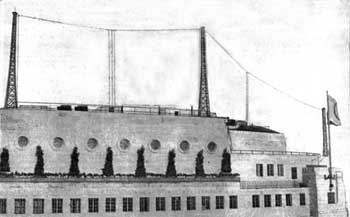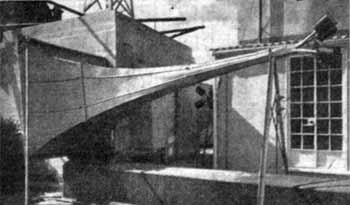The Exterior
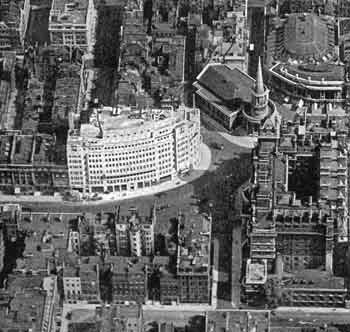
In the bottom right corner is The Langham Hotel, which would be used by the Corporation in later years, as would some other buildings in this view.
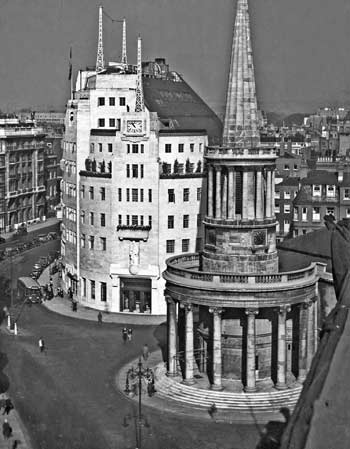
In the top right corner is the Queen's Hall, used for many broadcasts including the Henry Wood Proms. It opened in November 1893 and was destroyed by bombing on May 10th, 1941.
left - All Souls Church and Broadcasting House beyond, the Bath Stone of the church contrasting with the Portland Stone facade of BH. The photo would appear to have been taken from the roof of the Queen's Hall. All Souls is the last surviving church designed by John Nash. It was consecrated in 1824.
The plans for Broadcasting House included various positions for groups of sculpture and carvings. Four of these were the work of Eric Gill who also produced 'The Sower' in the reception hall.
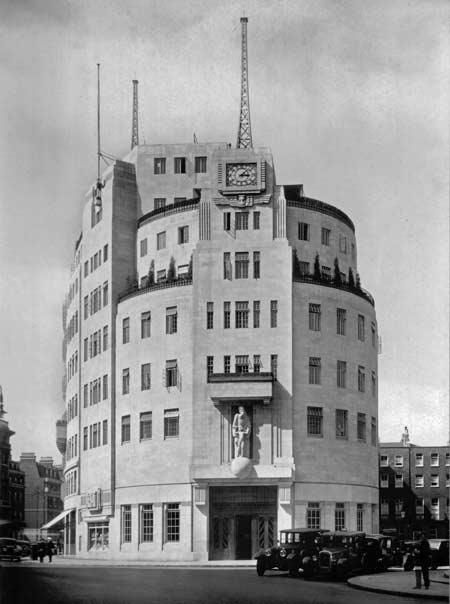
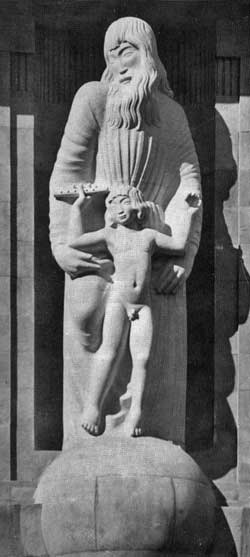
Prospero is interpreted as a draped and bearded figure, symbolic of wisdom and benevolence. Ariel is conceived as a young child holding in his right hand a pipe on which he plays unearthly music. Perhaps, though, Gill had a larger theme. Prospero is a very Biblical figure and the hands and feet of Ariel carry the marks of the stigmata. Maybe Gill's intention was to represent God the Father presenting God the Son to the world, on which they stand.
There was controversy about a certain part of Ariel's anatomy which was considered by some to be rather too generously proportioned. Gill reduced the size of the offending area, but there were still calls for the sculpture to be removed.
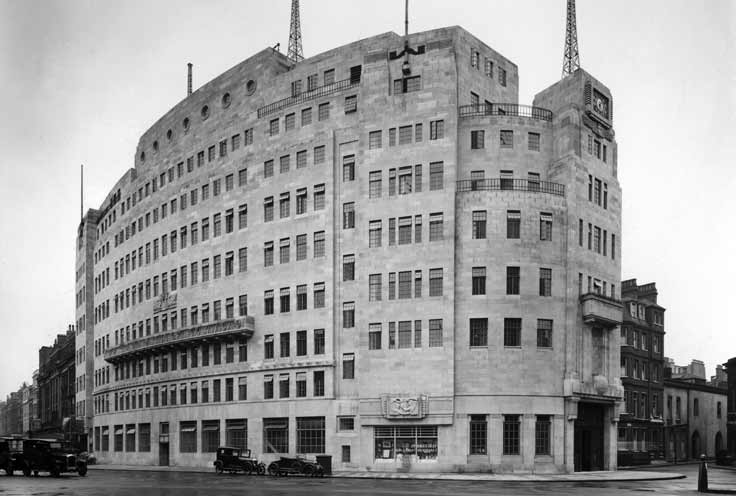
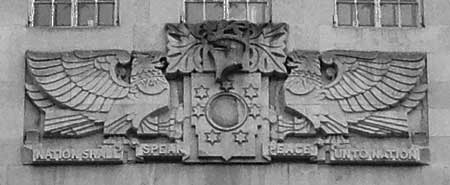
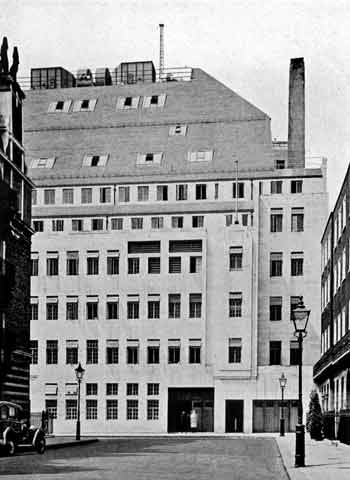
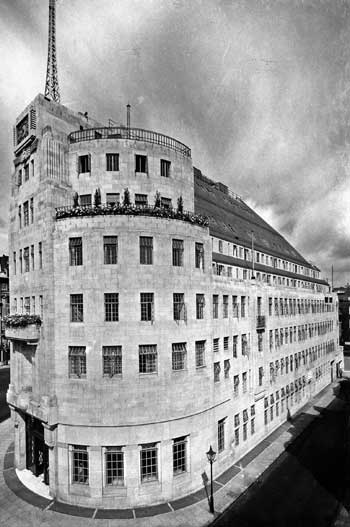
Two views of the east side. These shots show the shape of the roof, made necessary by the existence of 'Ancient Lights'. Intake panels at the third floor level supplied some of the ventilating and air-conditioning plants.
In addition to the sculpture above the main entrance Eric Gill produced three further carvings featuring Shakespeare's Ariel, who, as the invisible spirit of the air, could serve as a personification of radio broadcasting.
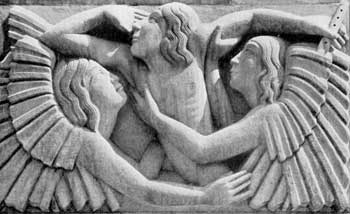
left - situated on
the west front above the windows of the book shop, Ariel is seen
supported by two angels with a hand to his ear, hearing celestial music.
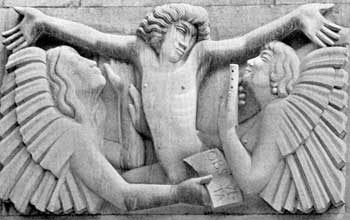
right - Above the public entrance to the Concert Hall, this group shows Ariel between Wisdom and Gaiety, the latter having taken Ariel's pipe. Ariel's outstretched arms symbolise his willingness to embrace both.
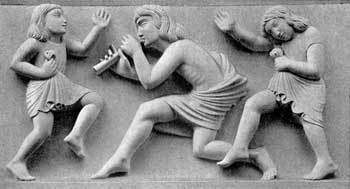
left - On the east front, Ariel is represented piping to children. The 1932 BBC Year Book said that "it gives an admirable effect of happiness and dancing."
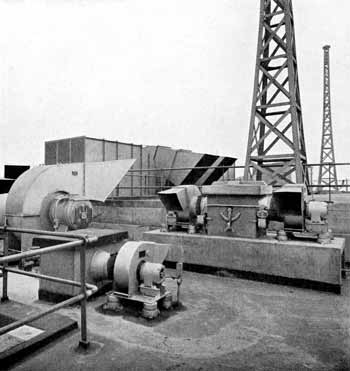
right - A general view of the roof showing the air extraction fans and the water coolers for the refrigerating plant in the sub-basement which are also seen below.
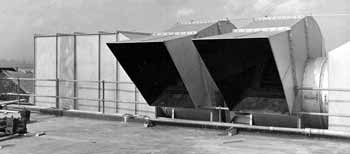
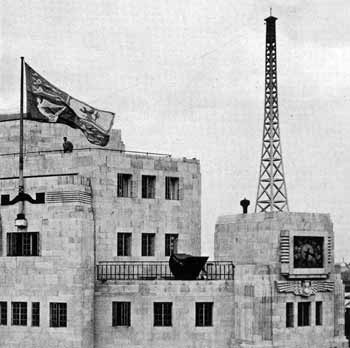
left - The building was in full use at the beginning of May 1932 but it was on 7th July that the royal opening took place, when King George V and Queen Mary visited. This event is recorded on a plaque in the entrance hall, between the inner and outer doors. The photo shows the royal standard flying on one of the four flagstaffs.
right - Aerial masts on the roof suggested the function of the building. The two on the highest part of the roof carried the aerial of an ultra-short-wave transmitter which was being used experimentally. The third mast, on the clock tower, was a spare. Also on the roof were various receiving aerials.
right - On the balcony either side of the tower were loudspeakers used for "broadcasting" Big Ben to the neighbourhood, at approximately its "natural" strength. These were used every day at one o'clock. In October 1937 "Wireless World" reported that "officials have been casting furtive glances [at the speakers] following the latest decision of the Birmingham City Council....[where] it has been decreed that a charge of creating a nuisance by private loud speaker can be laid if three householders lodge a complaint. Fines can be levied up to £5."
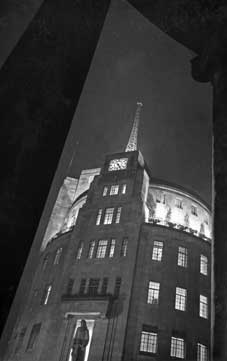
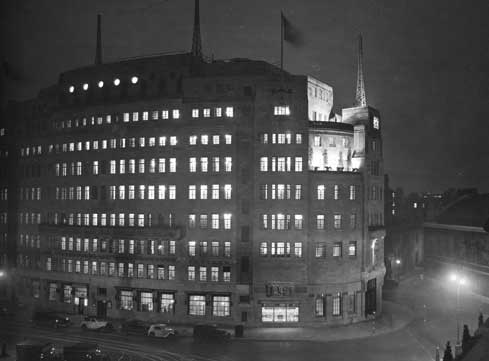
Two night views of Broadcasting House. The one on the left appears to have been taken from The Langham Hotel and the one on the right shows the columns of All Souls Church framing the building.
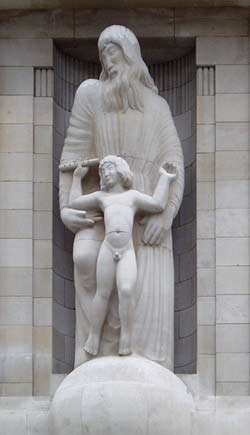
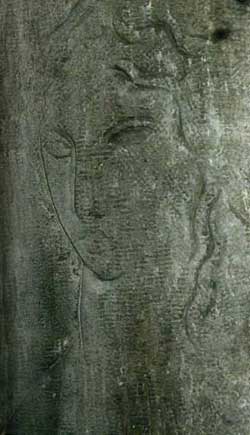
right - During the work this face was found carved on the back. There is a story about a cryptic message by Eric Gill saying 'the true face of the statue will only be seen when the building falls down'... (photo: Robert Greer)

